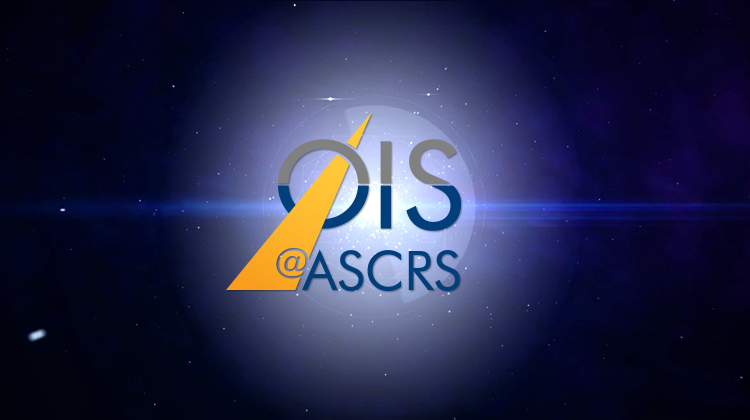Three Top Stories from OIS@ASCRS Reporters’ Notebook

Each day, we’re adding videos, reports and interviews from OIS@ASCRS to OIS.NET. We asked our team of writers to share their personal favorites from the New Orleans meeting.
Glaucoma treatment keeps moving away from topicals
If you listened to the presenters at the OIS Glaucoma Market Overview, the era of minimally (sometimes called micro-) invasive glaucoma devices (MIGS) is here – or at least it’s coming. Glaucoma represents a $6 billion market, and the majority of patients are on at least one topical drug, some on more than that. Problem is, compliance among patients is poor.
And that’s where MIGS has its best opportunity: as a one-off surgical procedure that can either eliminate or substantially reduce the number of drops patients are on. With a projected 40% or more compound annual growth rate from 2015 to 2020, MIGS represents the largest growth opportunity in ophthalmology, according to Russ Trenary, president and CEO of InnFocus. Allergan and Alcon both spent more than $300 million each this year to secure their foothold in the arena. Market pundits and company presenters all seem to believe these devices will eventually be approved as stand-alone procedures, vastly widening the potential customer base.
Companies to watch in this category include Ivantis, which is developing a microstent for use in stand-alone procedures as well as combined phaco/MIGS, and InnFocus, which is the only MIGS device company to use trabeculectomy as its comparator. Category pioneer Glaukos continues to fare well and just began a Phase II study on its travoprost intraocular implant with its iDose delivery system.
— Michelle Dalton, ELS
Diagnostics positioning to grow premium IOL channel
Cataract surgeons have been somewhat frustrated in getting their intraocular lens (IOL) patients the kind of excellent outcomes that lasik patients enjoy. The panel on diagnostics and the premium channel explored how improved diagnostics can help ophthalmologists get there and grow the market for premium IOLs in the process.
Seba Leoni, vice president and global head, surgical suite for Alcon, quoted results that showed 93% of refractive surgery patients were within 0.5 D of targeted refraction postoperatively versus just 62% of cataract surgery patients. Meeting cataract patients’ high expectations is the thinking behind Alcon’s Refractive Suite that incorporates Verion image guidance, the LenSx laser, LuxOR LX3 ophthalmic microscope, Centurion phacoemulsification platform, and ORA with VerifEye+ to calculate corneal measurements, Leoni said.
Likewise, other session participants shared their recent moves for giving cataract surgeons better diagnostic tools. Heidelberg Engineering has based its cataract and refractive imaging platform on an upgradable, modular design that incorporates IOL biometry, corneal topography/tomography, and anterior segment biometry and imaging. Carl Zeiss Meditec’s IOLMaster 700 integrates optical biometry and swept-source OCT technology to provide a higher level of corneal measurement than biometry alone, and the Zeiss Callisto eye computer-assisted cataract surgery system is designed to improve the capability of surgeons to more precisely place premium IOLs.
“If you bring together all these different technologies in a chain and integrate them, we have a big chance of reaching our goal of achieving the high 90s percentage of patients within 0.5 D of targeted refraction if not even within 0.25 D,” said Karlheinz Rein, PhD, vice president of cataract and retina surgery at Carl Zeiss Meditec.
— Richard Mark Kirkner
Goggles for glaucoma
OIS@ASCRS 2016 featured a new session called WTF@OIS (for What’s the Future). John Berdahl, MD, founder and CEO of Equinox, caused a buzz when he talked about his company’s technology – a set of goggles that create a small vacuum on the eyes for lowering intraocular pressure (IOP).
The concept challenges conventional wisdom about the etiology of glaucoma and joins a growing body of evidence pointing to pressure-related factors beyond IOP. One alternative theory of glaucoma pathogenesis that has largely been overlooked until lately is pressure dysregulation involving cerebrospinal fluid (CSFP). The difference between IOP and CSFP across the lamina cribrosa helps maintain the optic nerve in its proper shape; an abnormal pressure gradient directly influences the physiology of the optic nerve head. Consistent with the hypothesis, studies have shown that patients with primary open-angle glaucoma and normal-tension glaucoma (NTG) have significantly lower CSFP than normal individuals.1-3
“There is substantial support in the literature for the concept of a pressure differential in glaucoma,” Dr. Berdahl said. The Balance Goggles aim to correct pressure differentials between the eye and the cranium. “The goal of our treatment is lowering IOP, just like all treatments for glaucoma. We believe that by lowering IOP, we allow axonal transport to resume, which in turn delivers the metabolic needs to the nerve and removes the metabolic wastes, similar to dialysis,” Dr. Berdahl explained. The Equinox technology may be able to provide on-demand control over IOP and allow physicians to set a patient’s individual pressure. According to Dr. Berdahl, the goggles may be particularly useful in NTG and for non-adherent patients.
— Mike Smolinsky, PhD
Chief Content Officer, Ethis Communications
REFERENCES
1. Berdahl JP, Allingham RR, Johnson DH. Cerebrospinal fluid pressure is decreased in primary open angle glaucoma. Ophthalmology. 2008;115:763–8.
2. Berdahl JP, Fautsch MP, Stinnett SS, et al. Intracranial pressure in primary open angle glaucoma, normal tension glaucoma, and ocular hypertension: a case-control study. Invest Ophthalmol Vis Sci. 2008;49:5412–8.
3. Ren R, Jonas JB, Tian G, et al. Cerebrospinal fluid pressure in glaucoma: a prospective study. Ophthalmology. 2010;117:259–66.
